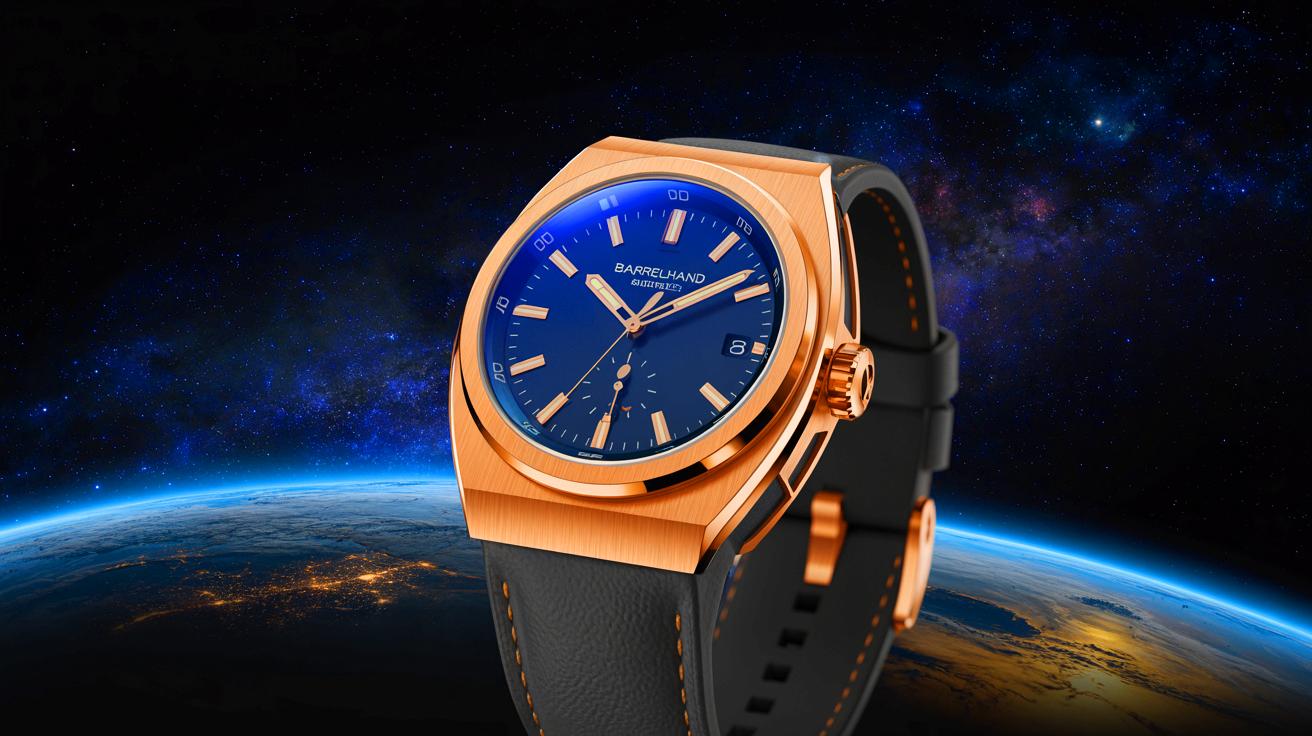| IN A NUTSHELL |
|
In the realm of space exploration, the role of watches has long been dominated by a single name: Omega. Known for its legendary Speedmaster, which played a pivotal role during the Apollo 13 mission, Omega’s association with space is well-cemented. However, as private space missions gain momentum and NASA prepares for renewed lunar expeditions, a fresh contender has emerged to challenge this legacy. Enter Barrelhand, a Californian startup aiming to redefine the standard for space-ready timepieces with its groundbreaking creation, the Monolith. This innovative watch is engineered specifically for the extreme conditions of space, promising to usher in a new era of horological advancement.
The Birth of Barrelhand’s Monolith
Barrelhand’s journey began with a bold vision: to create a watch capable of withstanding the harshest conditions known to humanity. Founded by Karel Bachand, a mechanical engineer with experience working on NASA projects, Barrelhand set out to address the limitations of traditional space watches. Bachand’s insights into the challenges faced by astronauts led to the development of the Monolith, a watch that combines cutting-edge 3D printing technology with advanced materials science.
The Monolith’s case is crafted from an aerospace-grade alloy known as scalmalloy, composed of scandium, aluminum, and magnesium. This remarkable material offers the strength of titanium at half the weight, making it ideal for space applications. With a weight of just about one ounce, every gram saved translates to significant cost reductions in space missions, where transportation expenses can reach $1.4 million per kilogram. The innovation extends beyond the case, as each component of the Monolith is engineered to withstand the rigors of space.
Kremlin Stunned as America Revives Cold War Jets for Satellite Launches, Calling It a Direct Threat to Global Stability
Redefining Space Watch Standards
Unlike its predecessors, the Monolith is purpose-built for both Intra-Vehicular Activity (IVA) and Extra-Vehicular Activity (EVA). This distinction sets it apart from Omega’s Speedmaster Skywalker X-33, which is limited to IVA use due to its reliance on electronic components vulnerable to freezing in outer space. The Monolith’s mechanical movement, derived from the robust Sellita SW300-1b, ensures reliable performance without the risk of electronic failure.
In designing the Monolith, Barrelhand tackled challenges unique to the space environment. The watch features a shatter-proof crystal designed to dent upon impact, preventing the creation of harmful debris. Standard rubber gaskets, prone to degradation in extreme cold, were replaced with aerospace-grade fluorosilicone O-ring seals, inspired by the International Space Station’s airlocks. These innovations demonstrate Barrelhand’s commitment to creating a watch that surpasses existing standards by addressing the unique demands of space travel.
“Like the Birth of Everything”: Scientists Recreate First Microseconds of Universe to Unveil Wild Behavior of Quark-Gluon Plasma
Pioneering Engineering for Extreme Conditions
One of the Monolith’s standout features is its ability to operate within a staggering temperature range of -184°F to 248°F. Achieving this required groundbreaking engineering, including the integration of an insulating air pocket within the watch’s case. This design innovation allows the Monolith to function flawlessly in environments that would cripple conventional watches.
Moreover, the Monolith’s resistance to outgassing—a crucial consideration in the enclosed space of a spacecraft—sets it apart. By using materials that do not emit volatile organic compounds (VOCs), Barrelhand ensures that its watch does not contribute to air quality issues within the International Space Station. This attention to detail underscores the company’s commitment to creating a truly space-worthy timepiece.
This 3D-Printed Tower Just Broke a World Record as Tor Alva Rises Higher Than Any Structure Ever Made by a Machine
Embracing Innovation and Overcoming Challenges
Barrelhand’s pursuit of excellence in watchmaking extends beyond the technical aspects. By utilizing advanced 3D printing techniques, the company is challenging traditional notions of watch manufacturing. The precision required to craft intricate components through 3D printing showcases the maturity of this technology and its potential to revolutionize the industry.
However, the journey to see the Monolith in space is not without its challenges. Navigating the complex bureaucratic landscape of NASA’s equipment submission process, while competing with Omega’s established presence, requires strategic perseverance. Barrelhand’s grassroots approach, engaging directly with astronauts and scientists, highlights the company’s commitment to innovation and its determination to gain acceptance within the space community.
As Barrelhand continues to push the boundaries of what is possible in horology, it raises intriguing questions about the future of space exploration and watchmaking. Will the Monolith become the new standard for space missions, or will established names continue to dominate the field? How will this new era of innovation impact the broader watch industry? The answers may shape the course of timekeeping in space for years to come.
Our author used artificial intelligence to enhance this article.
Did you like it? 4.3/5 (22)
